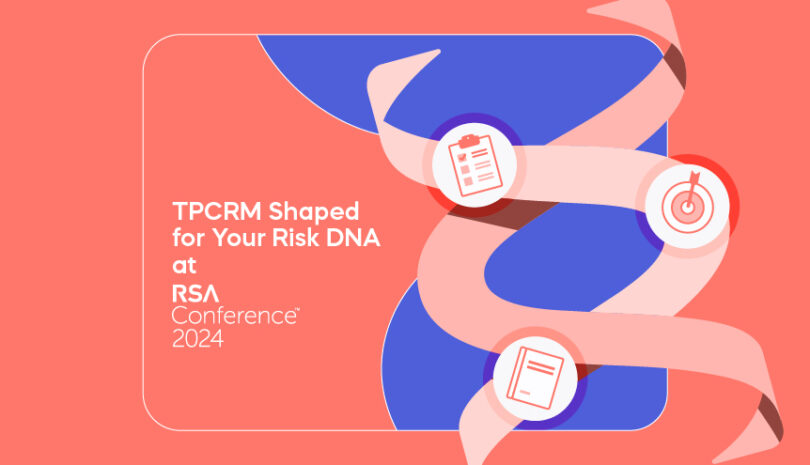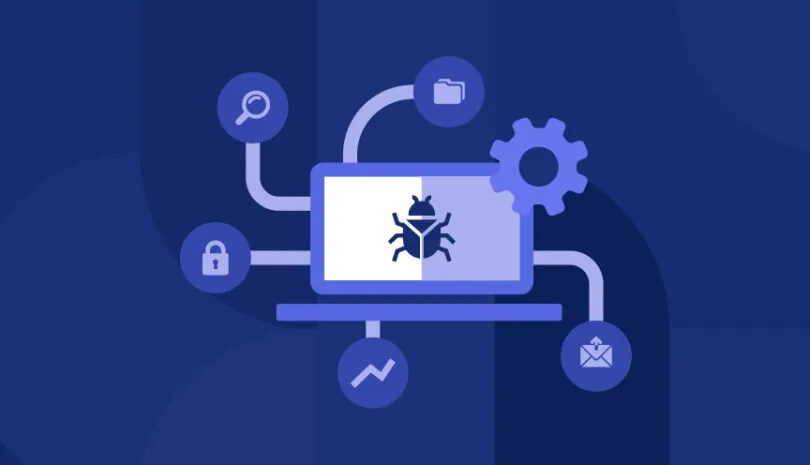Security and compliance professionals agree that third-party cybersecurity risk management is vital to organizations. Without having the right security policies and procedures in place, your organization could be vulnerable to third-party data breaches. This could spell disaster, both in terms of loss of customer trust as well as hefty compliance penalties.
There are a lot of tools that claim to address third-party cyber risk. Which are the ones that are truly essential? Read on for the top five.
Top 5 Third-Party Security Assessment Tools
1. Vendor inventory
A vendor inventory addresses the primary step of creating a vendor risk management program: Knowing who are the vendors that do business with your organization. Even with small companies, this is often harder than it sounds, especially considering the rise in cloud app use and shadow IT. In fact, one source noted that by 2027, 90% of IT spending will take place outside of the IT organization
Many organizations mistakenly do not consider low-risk business partners, such as marketing tools, to be their vendors. However, risk can easily come from such “low-risk” business partners. For example, a data breach involving online text invitation service Evite exposed millions of users. We tend to think of Evite as a B2C, but in this case, the business information of companies that used it was exposed.
The fact is that doing business with any vendor poses some risk to a company. For this reason, it’s important to uncover all supply chain relationships, ideally using an asset discovery tool, and then determine the level of risk for each vendor.
2. Industry-relevant risk management standards
Every industry has recognized best practices that should guide how your organization manages information security risk assessments, such as NIST and ISO. There are also industry standards which you should be familiar with, like the CSA Cloud Controls Matrix and PCI/DSS. You should be sure to check the guidelines that are particular to your industry.
It’s important for organizations to be familiar with these best practices and to make them part of their overall third-party security assessment process.
3. Vendor Management Questionnaires
Questionnaires are sent to vendors to inquire about their internal security practices and controls. Third-party risk management questionnaires are usually completed prior to vendor onboarding and then updated at regular intervals. These security assessments are vital for reducing third-party risk, even though they can be cumbersome to complete—especially if they are on spreadsheets. Questionnaires should be customized for the vendor’s particular level of risk, depending on the type of access to data that the vendor has.
The best solutions for asking relevant security questions are automated, allowing for easy tracking and replies. Be sure to also look for a flexible solution that can utilize standard questionnaire templates like the SIG questionnaire and/or allow you to create your own. It’s also helpful to use questionnaires that can check for compliance to regulations like GDPR and CCPA.
Even though security questionnaires are helpful, they should not be the only component of your third-party security cyber risk assessment. Cybersecurity risks constantly change, and for this reason, it’s important to complement questionnaires with other methods of evaluation such as security ratings and continuous monitoring.
4. Security ratings
Security ratings provide organizations with an overall view of their third parties’ cyber posture by assessing their attack surface. The best solutions can pinpoint cyber gaps, provide directions about how to close them, and continuously monitor third parties for any changes in cyber posture throughout the business relationship.
That being said, these cybersecurity rating only provide one part of the information that an organization needs to adequately assess its third parties. It’s important to combine the ratings with security questionnaires, so as to receive a complete 360-degree view of cyber posture.
5. Third-party risk management software
Large companies that work with hundreds or even thousands of vendors must go beyond a simple vendor list, and will instead often look to better manage risk with software. Such solutions can focus on various risk aspects, including financial, environmental, regulatory and/or cyber risk, or can specialize in one particular type of risk.
Because comprehensive cybersecurity evaluations require a specific expertise, many organizations often opt for a solution that focuses specifically on cybersecurity risk. Such solutions provide a process for evaluating the security of third parties and continuously monitoring them for any changes in cyber posture.
Conclusion
What are the most important third-party cyber risk assessment tools for your organization? It depends on your cybersecurity needs and goals. An end-to-end solution like Panorays includes all these essential elements and more, allowing you to pick and choose the right features for your particular industry, vendors and security process.
Want to learn more? Request a demo today.
FAQs
Three tools used to address risk are:
1. Vendor inventory. This step helps your organization identify which vendors you are doing business with. With the increase in third, fourth and fifth-party vendors today, this step is more complex – and critical – than ever.
2. Industry-relevant risk management standards. Regulatory frameworks such as NIST, ISO and standards such as PCI DSS should assist your organization in managing sensitive data and information.
3. Vendor management questionnaires. Third-party risk management questionnaires help your organization understand the internal security controls your vendor has in place These questionnaires should be customized, and preferably automated to suit the vendor’s industry, level of risk and access to type of data.
Third-party risk management, or TPRM, is the process of managing risk related to your third parties, suppliers, partners, contractors and subsidiaries. Effective third-party risk management reduces risk posed to your organization and enables you to improve it to better mitigate against future risk.
An example of third-party risk posed to your organization is a vendor’s failure to control its internal systems. For example, if a vendor is in the payments industry and does not have proper privacy controls in place for customer data, your organization can be held liable in the event of the vendor’s non-compliance. In addition, you are more susceptible to a data breach or other security incident resulting from vendor non-compliance.




